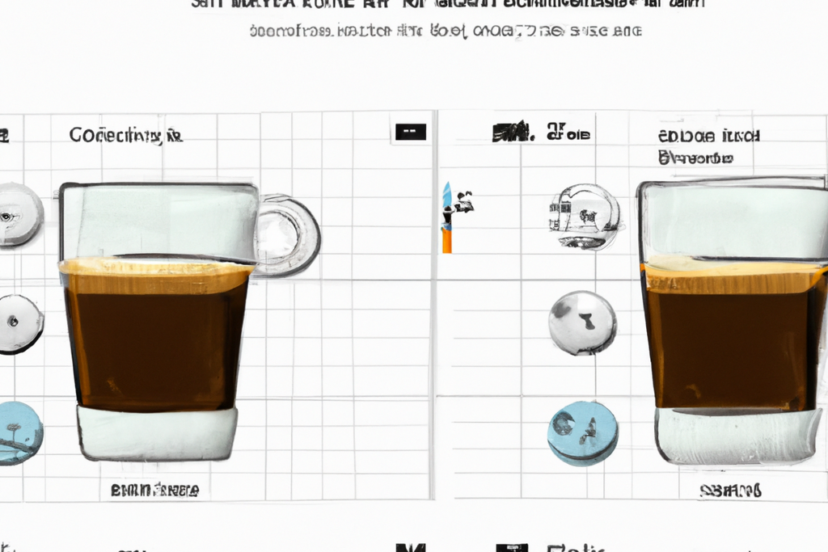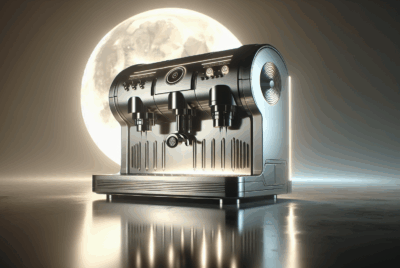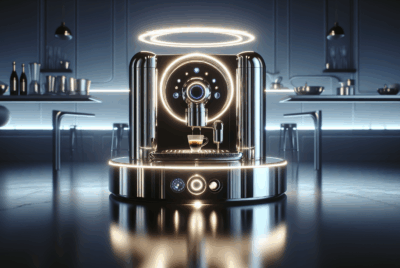Caffeine Content: Espresso vs Coffee
As an Amazon Associate, I earn from qualifying purchases, at no additional cost to you. Disclaimer
In my latest article, I’m turning the spotlight onto two beloved beverages: espresso and coffee. It’s time to unravel the caffeine mystery nestled within these tempting cups of goodness. If you’ve ever puzzled over the caffeine content of your morning cappuccino compared to your afternoon drip coffee, this one’s for you. Throughout this enlightening exploration, we’ll uncover the truth and put to rest the long-standing debate of caffeine content: espresso vs coffee. Brace yourself for an exciting caffeine-infused journey!
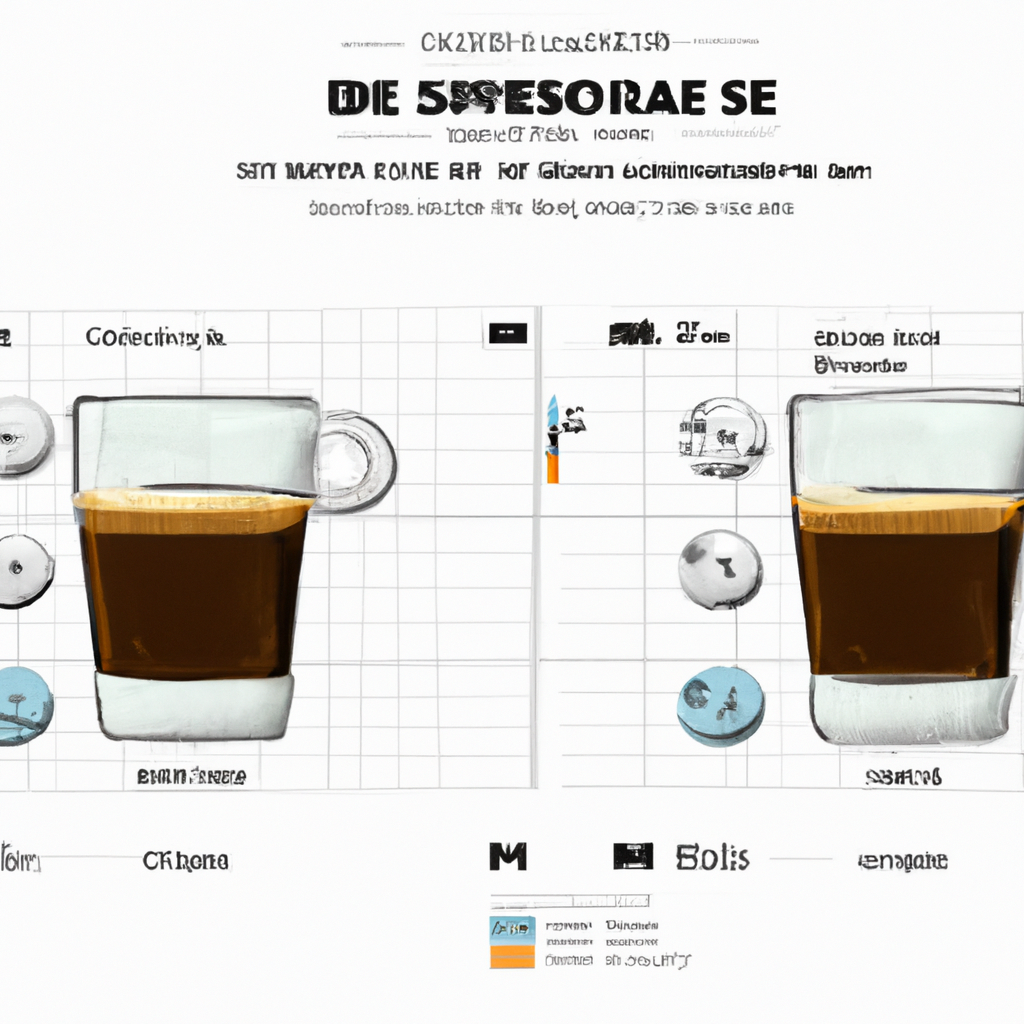
Understanding Caffeine
Definition of Caffeine
Caffeine is a natural stimulant consumed by millions worldwide, primarily in tea, coffee and energy drinks. It’s classified as a psychoactive drug because it stimulates the central nervous system, resulting in increased attentiveness and reduced fatigue.
Natural Sources of Caffeine
Caffeine is derived from various plants, including coffee beans, tea leaves, kola nuts, cocoa beans, and guarana berries. Each of these sources has different levels of caffeine, depending on the type and the cultivation process.
Caffeine in the Human Body
Upon ingestion, caffeine is quickly absorbed into our bloodstream and transported to all our body tissues. It works by stimulating the brain and central nervous system to ward off fatigue and improve concentration. Its impacts can be felt as soon as 15 minutes after consumption, lasting for up to six hours.
Impact of Caffeine on Human Health
Caffeine has both positive and negative effects on our health. On the positive side, it can boost mood, alertness and mental performance. Some studies even suggest that coffee consumption can lower the risk of death. However, excessive consumption may lead to insomnia, digestive issues, increased heart rate and blood pressure.
Caffeine in Coffee and Espresso: An Overview
Introduction to Coffee and Espresso
Coffee and espresso are two widely consumed beverages with caffeine. Coffee is a popular morning drink made by steeping ground coffee beans in hot water, while espresso is a concentrated form of coffee brewed by forcing a small amount of hot water or steam through finely ground coffee beans.
Process of Extracting Caffeine from Coffee Beans and Espresso Beans
Caffeine is extracted from coffee and espresso beans using hot water or steam. Roasting time and temperature significantly influence the caffeine content as caffeine is highly soluble in hot water.
Caffeine in Different Types of Coffee and Espresso
The amount of caffeine in coffee and espresso varies widely depending on numerous factors such as the type, the blend, the brewing method and the serving size. Typically, a standard cup of coffee has more caffeine than a single shot of espresso. However, per volume, espresso contains more caffeine.
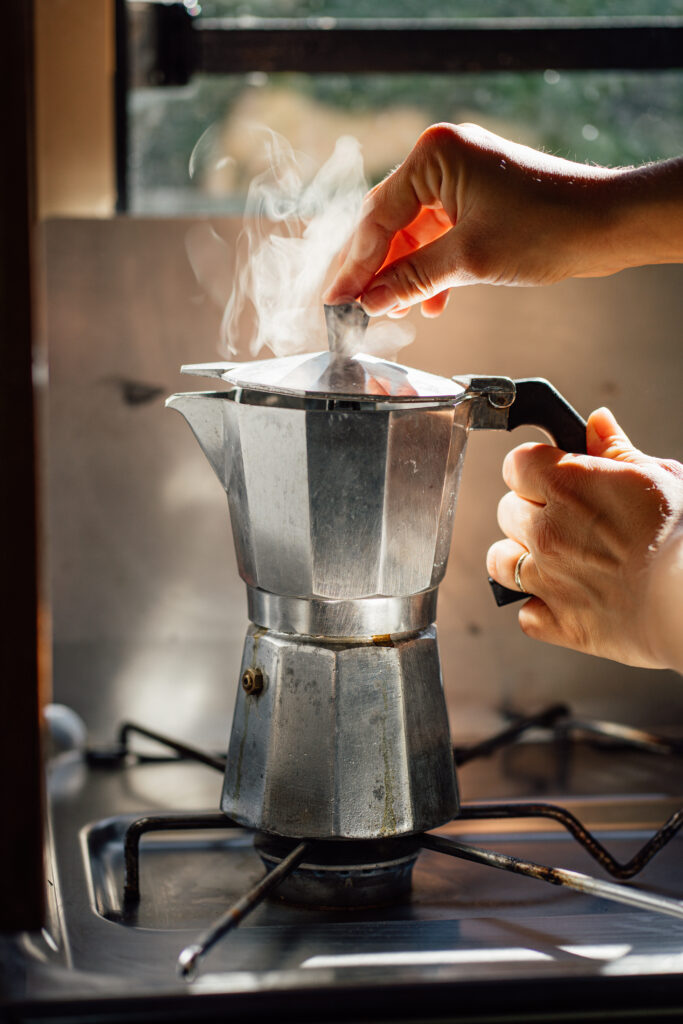
The Chemistry of Caffeine in Coffee and Espresso
Chemical Components of Coffee and Espresso
Apart from caffeine, coffee and espresso contain hundreds of other chemical substances, including carbohydrates, lipids, nitrogenous compounds, vitamins, minerals, alkaloids and phenolic compounds. These chemicals contribute to their taste, aroma and health benefits.
The Role of Caffeine in the Taste of Coffee and Espresso
Caffeine itself has a bitter taste and contributes to the overall bitter flavor profile of coffee and espresso. However, it’s the interplay of all the chemical substances that defines the overall taste.
Factors Affecting Caffeine Composition in Coffee and Espresso
Caffeine composition in coffee and espresso is influenced by various factors like the variety of the bean, the soil and climate where it’s grown, the roasting process, the brewing method and the serving size. All these factors determine the final caffeine content in your cup.
Measuring Caffeine Content
Methods of Measuring Caffeine Content
Caffeine content is typically measured using chromatographic techniques, such as High-Performance Liquid Chromatography (HPLC). It involves separating, identifying, and quantifying the caffeine present in a sample.
Factors Influencing Measurement of Caffeine Content
Various factors can influence the measurement of caffeine content. These include the type of sample, the extraction process, and the measurement technique itself.
Challenges in Measuring Caffeine Content in Coffee and Espresso
When measuring caffeine content, the challenges include sample variability and preparation, consistency in extraction, and precision of the analytical method used. These factors can cause variations in recorded caffeine levels.
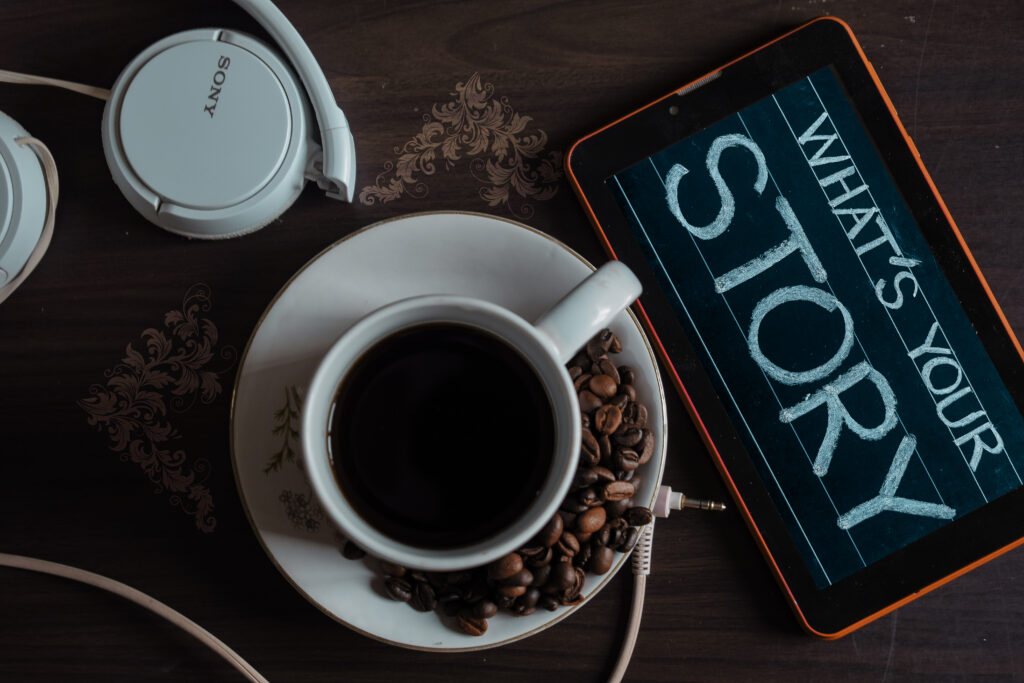
Caffeine Content in Coffee
Average Caffeine Content in Different Types of Coffee
On average, 8 ounces of brewed coffee contains about 95 mg of caffeine. However, this figure may fluctuate depending on the brand and type of coffee beans.
Factors Influencing Caffeine Content in Coffee
The caffeine content in coffee can vary due to factors like bean type, roast level, brewing method, and serving size. Darker roasts usually contain less caffeine because roasting process breaks down the caffeine molecule.
Health Effects of Caffeine in Coffee
Drinking coffee in moderation can leverages the benefits of caffeine’s stimulatory effects like improved mood, concentration, and physical performance. Nonetheless, excessive consumption can cause negative effects like jitters, anxiety, rapid heart rate, and sleep disruption.
Caffeine Content in Espresso
Average Caffeine Content in Different Types of Espresso
a standard shot of espresso contains approximately 63 mg of caffeine. As with other coffee types, variations in the roast, grind, and brewing process can affect caffeine levels.
Factors Influencing Caffeine Content in Espresso
The caffeine content in espresso is influenced by factors like the type of coffee bean, its roast level, shot size and the brewing method. Notably, finer grinds and longer brew times generally result in higher caffeine extraction.
Health Effects of Caffeine in Espresso
Espresso, like other caffeinated beverages, can provide energy, enhance mood and sharpen focus if consumed in moderation. However, high caffeine content can lead to side effects like restlessness, insomnia and faster heart rates if overconsumed.
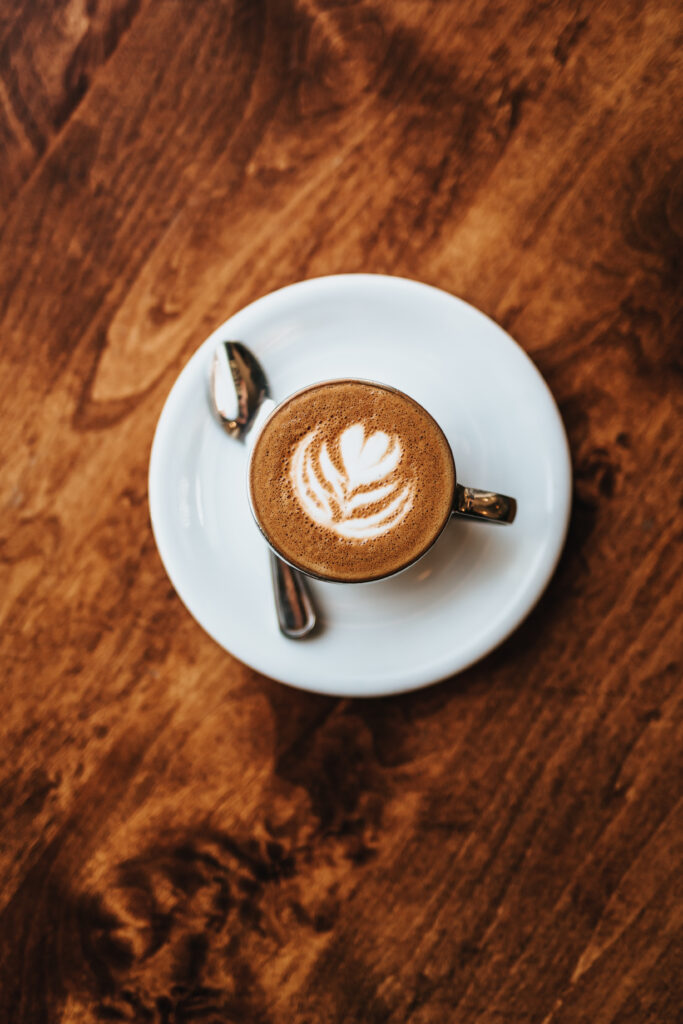
Comparative Analysis of Caffeine in Coffee and Espresso
Caffeine Content: Coffee vs Espresso
While a single shot of espresso often contains less total caffeine than a standard cup of coffee, it has a higher concentration per ounce due its concentrated nature.
Flavor Profile: Coffee vs Espresso
The taste is another factor that sets espresso and coffee apart. Espresso delivers a concentrated coffee taste that is stronger and more robust, while coffee provides a more diluted taste that can range from mild to strong based on the brewing method and type of bean used.
Health Benefits and Risks: Coffee vs Espresso
The health benefits and risks of both beverages are more or less the same, as they largely depend on the caffeine content. Moderation is key to enjoy the benefits and avoid potential negatives such as caffeine addiction and withdrawal symptoms.
Debate Surrounding Caffeine Content in Coffee and Espresso
Common Misconceptions about Caffeine in Coffee and Espresso
A common misconception is that espresso contains more caffeine than regular coffee. In reality, it’s all about concentration and serving size.
Expert Opinions on Caffeine in Coffee vs Espresso
Experts agree that while an espresso shot has more caffeine per ounce, a standard cup of coffee delivers more caffeine overall due to the larger serving size.
Impact of Caffeine Myths on Coffee and Espresso Sales
Caffeine myths can impact sales of coffee and espresso as consumers search for options that cater to their energy, health, or lifestyle needs. As the industry continues to grow, the demand for more transparent and accurate information on caffeine content will grow with it.
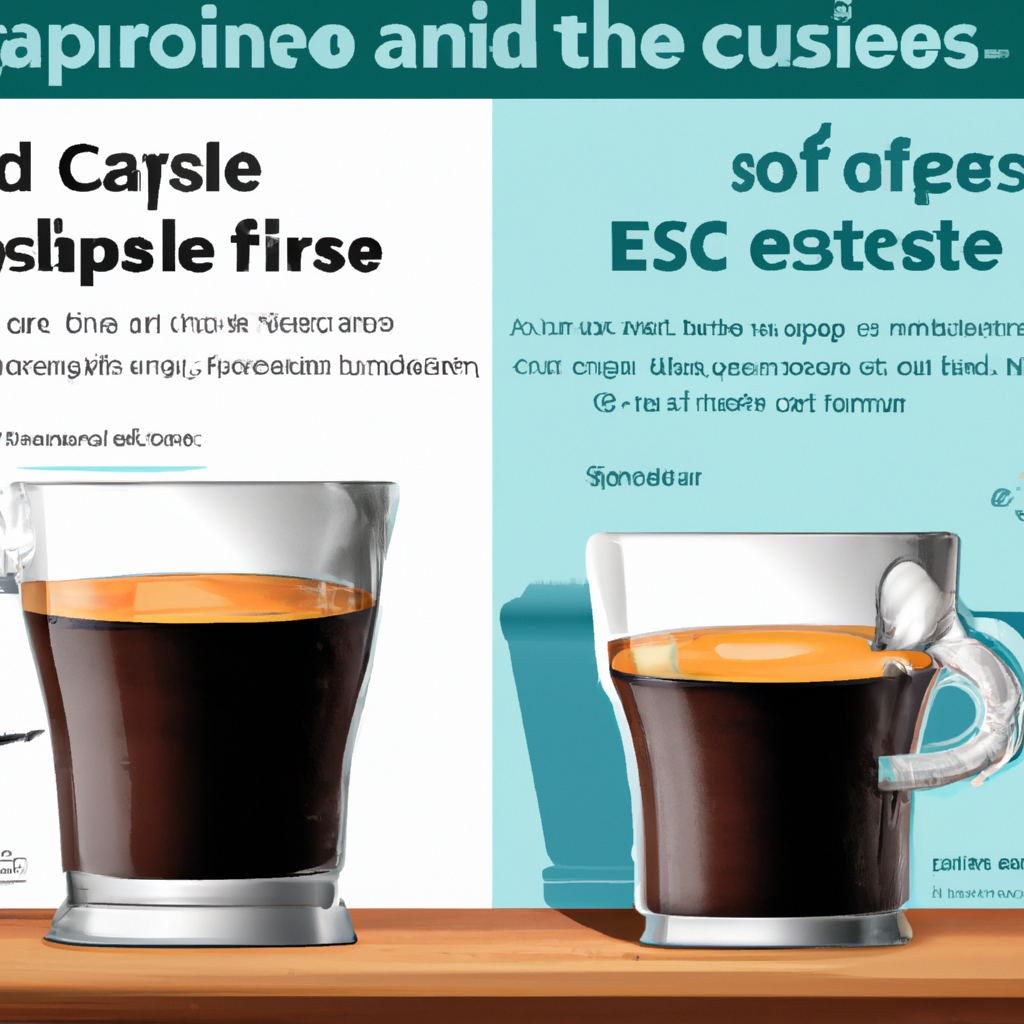
Role of Brewing Process on Caffeine Content
Different Brewing Methods and Their Impact on Caffeine Content
the brewing method plays a key role in determining the caffeine content of your cup. Coffee, for example, can be prepared using drip, French press, or cold brew methods, each yielding different levels of caffeine.
The Brew Time and Its Effect on Caffeine Extraction
Brew time also affects caffeine content. The longer coffee beans or tea leaves are exposed to hot water, the more caffeine gets extracted.
Comparative Analysis of Caffeine Content through Different Brewing Methods
The caffeine content can significantly differ by brewing method. methods that extract more flavor from the beans, like espresso or French press, typically also extract more caffeine.
Consumer Trends in Caffeine Consumption
Increasing Demand for Highly Caffeinated Beverages
With our increasingly busy lifestyles, there has been a growing demand for beverages with higher caffeine content to boost energy levels. From energy drinks to cold brew coffee, consumers are constantly in search of that perfect pick-me-up.
Consumer Preferences in Coffee vs Espresso
Personal preference, lifestyle, health considerations, and cultural influences dictate whether an individual leans towards coffee or espresso. Some consumers prefer the concentrated taste of espresso, while others prefer the milder coffee brew.
Future Trends in Caffeine Consumption and the Influence of Coffee and Espresso
As consumers become more health-conscious, a trend towards natural sources of caffeine like coffee and espresso is observed. Ongoing explorations to tweak brewing methods to balance flavor, caffeine content, and health benefits may shape the future of caffeine consumption.

